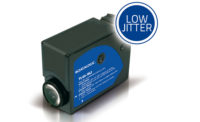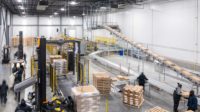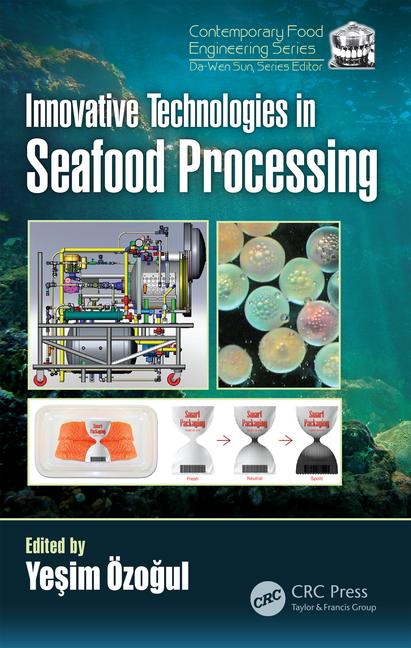COLD DESIGN BUILD
Automation Trends in Printing

R&FF asked Emmanuel Chabut, IoT packaging thought leader at Videojet Technologies LTD to discuss some of the latest trends and technology in printing and labeling.
R&FF: What are some of the emerging trends in automated printing and labeling?
Today’s printing and labeling devices can continuously generate data, and now analytic tools are becoming more available to help make the collected data useful for automated machine monitoring, diagnostics, and more. The potential gains are significant as the maintenance costs of factory equipment can be reduced with predictive maintenance while improvements in maintenance can cut capital equipment investments.
With the Internet of Things (IoT), manufacturers can gain a comprehensive view of what is going on at virtually every point of production, allowing adjustments to be made in real-time and helping to maintain an uninterrupted flow of finished goods while avoiding defects. Real-time data from printers and labelers can provide immediate and historical insight to production performance throughout a manufacturer’s facilities. This visibility helps enable the manufacturer to track and optimize their production and processes, improving productivity and profitability.
Consumer demand for supply chain and product transparency is also pushing the packaging industry to greater automation. Printed traceability codes and product information can play a central role in helping assure consumers that food is safe to eat, is sourced responsibly, and has the nutritional content they require. Complex codes can also help combat product tampering and counterfeiting. Reliable track and trace solutions are available to enable monitoring of an entire supply chain, from the manufacturer’s packaging line to the point of sale.
R&FF: How can printing and labeling automation help food manufacturing and distributing companies?
As part of a printing and labeling system, control systems, communications solutions, sensors, vision systems, and software for the Industry 4.0 digital factory all help enable manufacturers to analyze data more intelligently, optimize their operations, boost productivity, and enhance their flexibility. Investments in coding and marking solutions that are driven by the IoT can reduce downtime by eliminating coding errors and creating certainty around production integrity.
As the convergence of IT and OT (operational technology) brings more information from real-time systems into IT software, a growing number of manufacturing companies see optimization for cost and efficiency as the leading benefit of IT/OT data integration. They are taking advantage of consolidated and dynamic views of their production systems and making operational adjustments across their value chain.
To help businesses meet these priority needs, software packages can provide improved integration with production control systems and greater levels of interoperability with third party devices on production lines.

R&FF: How are automated printing and labeling systems integrated with other equipment in a cold food environment?
Care must be taken to ensure coding and marking equipment can withstand the intended production environment: cold, wet, caustic wash, etc. IP ratings, equipment setup, and quality stainless steel all help in these environments. When practical, Videojet will often integrate into other packaging line elements such as labelers, palletizers, and carton erectors.
Integrating with other OEM equipment provides some additional equipment protection and helps streamline communication, data networking efforts, and digital migration. To meet their specific application demands, appropriate options for integration and coding technologies are given to equipment users in cold environments.
R&FF: When building a new cold production or storage facility, what are some of the factors that must be taken into consideration when it comes to choosing a printing/labeling system?
In a cold production environment, it is critical to select specialized inks and printers that can provide reliable performance and achieve high print quality and proper code adhesion throughout a product’s lifecycle. When considering a continuous inkjet printer, look for features like positive air flow in a print head that can reduce the risk of moisture entering the system. Other features allow a printer to continuously monitor and adjust ink consistency to help produce great print quality, even in extremely cold and changing environments.

R&FF: Anything else our readers to know?
The best advice is to get help. It is important to choose a partner that has knowledge of cold production environments and IoT expertise to take advantage of scalable technology for compatibility with other systems.
Code adhesion is critical when choosing a suitable printing technology in cold environments. Labels may fall off and wax may turn brittle, but select continuous inkjet printers with specialized inks are designed to handle challenging temperatures and achieve excellent adhesion. Another option is marking with CO2, fiber, or UV laser marking systems. They can mark clear and permanent codes, depending upon the substrate’s reaction. Lab testing is required to confirm suitability.
With a consultative approach, various printing and marking technologies can be considered. Printed packaging samples help to ensure that the coding methods in consideration will meet expectations and packaging lifecycle requirements.
Looking for a reprint of this article?
From high-res PDFs to custom plaques, order your copy today!









